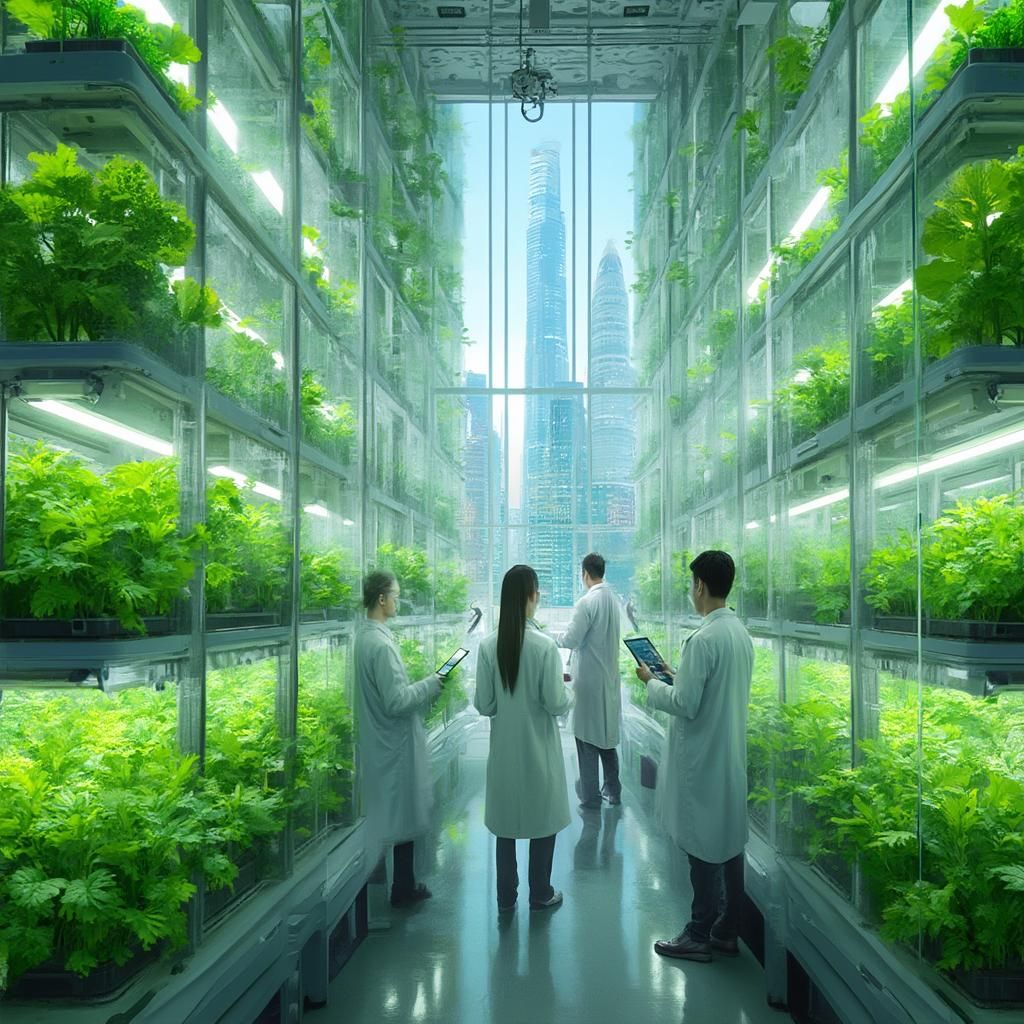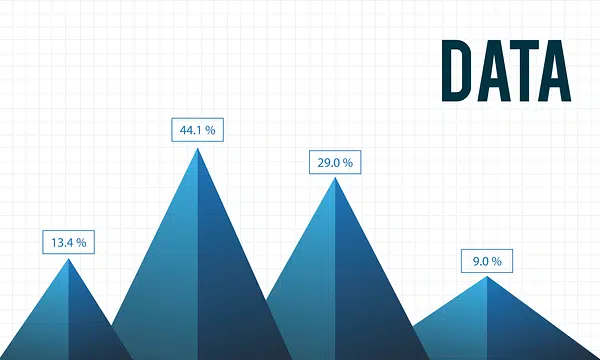In an era increasingly defined by environmental consciousness and the urgent need to mitigate climate change, the technology sector, despite its vast contributions to progress, faces a critical imperative: to evolve sustainably. Sustainable tech, or eco-friendly innovation, represents a transformative movement focused on designing, developing, and deploying technologies that minimize negative environmental impact, conserve natural resources, and promote a healthier planet. It’s about moving beyond simply ‘doing less harm’ to actively creating solutions that are resource-efficient, reduce waste, embrace renewable energy, and foster a circular economy. This isn’t merely a niche concern; it is rapidly becoming a core principle guiding the next wave of technological advancement, driving innovation towards a greener, more responsible future.
The Urgent Call for Sustainable Technology: Why Now?
To understand the critical importance of sustainable tech, we must first recognize the environmental footprint of the traditional technology industry and the broader global challenges it faces.
A. The Environmental Footprint of Conventional Technology
While technology has brought immense benefits, its rapid growth and consumption patterns have inadvertently created significant environmental burdens.
- High Energy Consumption: Data centers, which power the internet and cloud services, consume vast amounts of electricity, often sourced from fossil fuels. The energy required to manufacture electronic devices, from smartphones to servers, is also substantial. This contributes directly to greenhouse gas emissions and climate change.
- Resource Depletion: The production of electronic devices relies heavily on finite natural resources, including rare earth metals, precious metals (gold, silver), and industrial minerals. Extracting these materials often involves environmentally damaging mining practices, including habitat destruction and water pollution.
- Electronic Waste (E-Waste Crisis): The rapid obsolescence of electronic devices leads to a burgeoning e-waste problem. Old electronics often end up in landfills, leaching toxic chemicals (lead, mercury, cadmium) into the soil and water. Recycling rates for e-waste remain low globally, exacerbating this crisis.
- Water Usage: Manufacturing semiconductors and cooling data centers are water-intensive processes, putting strain on freshwater resources, particularly in regions already facing water scarcity.
- Supply Chain Emissions: The global supply chains for technology products, from material extraction to manufacturing, assembly, and distribution, generate significant carbon emissions through transportation and industrial processes.
B. Global Environmental Imperatives
Beyond its direct footprint, the tech sector is increasingly expected to contribute to solutions for broader global environmental challenges.
- Climate Change Mitigation: As the urgency of climate change intensifies, technology is seen as both a problem and a potential solution. Sustainable tech aims to reduce emissions within the industry and provide tools for other sectors to do the same.
- Resource Scarcity: Growing populations and consumption patterns are straining global resources. Sustainable tech seeks innovative ways to use resources more efficiently, promote recycling, and develop alternative, renewable materials.
- Biodiversity Loss: Environmental degradation caused by resource extraction, pollution, and climate change contributes to biodiversity loss. Sustainable tech initiatives can help protect and restore ecosystems.
- Pollution Control: Addressing air, water, and soil pollution requires technological solutions, from advanced filtration to waste management systems.
The confluence of the tech industry’s impact and these pressing global challenges highlights the undeniable need for a rapid acceleration in sustainable tech innovation.
Core Principles Guiding Sustainable Technology Development
Developing truly eco-friendly technology requires a holistic approach, integrating sustainability considerations across the entire product lifecycle, from conception to end-of-life.
A. Energy Efficiency: Reducing the Power Footprint
A fundamental principle of sustainable tech is to minimize energy consumption throughout the technology lifecycle.
- Hardware Optimization: Designing more energy-efficient processors, memory, and storage devices that perform more computation with less power. This includes advancements in chip architecture and cooling solutions.
- Software Optimization: Writing leaner, more efficient code that requires fewer computational resources. This involves optimizing algorithms, reducing unnecessary operations, and improving software architecture to consume less power.
- Data Center Efficiency: Implementing highly efficient cooling systems, smart power distribution, and leveraging renewable energy sources for data centers. Designing data centers in colder climates or utilizing liquid cooling can significantly reduce energy use.
- Dynamic Power Management: Developing systems that can dynamically adjust power consumption based on workload, putting components into low-power states or turning them off when idle.
B. Circular Economy Principles: Beyond Linear Consumption
Moving away from the traditional ‘take-make-dispose’ linear economy, sustainable tech embraces circular economy principles, aiming to keep materials in use for as long as possible.
- Extended Product Lifespan: Designing products for durability, repairability, and upgradability. This contrasts with planned obsolescence, which encourages frequent replacements.
- Recyclability and Disassembly: Designing products with materials that are easily recyclable and facilitating simple disassembly to recover valuable components and materials. Avoiding proprietary fasteners or glues that hinder recycling.
- Use of Recycled and Renewable Materials: Prioritizing the use of recycled plastics, metals, and other materials in manufacturing, reducing the demand for virgin resources. Exploring bio-based or renewable materials where feasible.
- Product-as-a-Service Models: Shifting from product ownership to service models (e.g., leasing devices) where manufacturers retain ownership and are responsible for end-of-life management, promoting repair and reuse.
C. Resource Conservation: Smart Material Usage
Sustainable tech focuses on minimizing the consumption of finite natural resources and reducing the environmental impact of extraction.
- Material Reduction: Designing devices with fewer components and lighter materials, reducing overall material consumption.
- Responsible Sourcing: Ensuring that materials are sourced ethically and responsibly, minimizing environmental damage and supporting fair labor practices in mining and manufacturing.
- Water Footprint Reduction: Optimizing water usage in manufacturing processes and data center cooling. Implementing water recycling and closed-loop systems.
- Elimination of Hazardous Substances: Designing products free from harmful chemicals and toxic heavy metals (e.g., lead, mercury, cadmium), improving safety for workers and recyclers, and preventing environmental contamination.
D. Transparency and Lifecycle Assessment
To truly claim sustainability, tech products and services must be evaluated holistically across their entire lifecycle, with transparent reporting.
- Lifecycle Assessment (LCA): Conducting thorough LCAs to evaluate the environmental impacts (energy, water, emissions, waste) at every stage: material extraction, manufacturing, transportation, use, and end-of-life.
- Supply Chain Transparency: Tracking and reporting environmental impacts across the entire global supply chain, from raw material suppliers to final distribution.
- Environmental Product Declarations (EPDs): Providing standardized, third-party verified information about the environmental performance of products.
- Carbon Footprint Reporting: Quantifying and publicly reporting greenhouse gas emissions associated with products and operations, setting targets for reduction, and achieving carbon neutrality or negativity.
E. Digital Solutions for Environmental Challenges
Beyond making tech itself sustainable, this principle focuses on leveraging technology to solve broader environmental problems.
- Smart Grids: Using AI and IoT to optimize energy distribution, integrate renewable energy sources, and reduce waste in power grids.
- Precision Agriculture: Deploying sensors, drones, and AI to optimize water use, fertilizer application, and crop yields, reducing environmental impact in farming.
- Environmental Monitoring: Using satellite imagery, IoT sensors, and AI to monitor deforestation, pollution levels, wildlife populations, and climate indicators.
- Circular Economy Platforms: Developing digital platforms that facilitate resource sharing, product repair, and material recycling, enabling circular economic models.
Key Areas of Innovation in Sustainable Tech
The push for eco-friendly innovation is manifesting across various sectors of the technology industry, driving exciting advancements.
A. Green Data Centers and Cloud Computing
The backbone of the digital world, data centers, are undergoing a green revolution.
- Renewable Energy Integration: Major cloud providers are increasingly powering their data centers with 100% renewable energy (solar, wind, hydro), purchasing renewable energy credits, or building their own renewable energy facilities.
- Advanced Cooling Technologies: Moving beyond traditional air conditioning to more efficient methods like liquid cooling (direct-to-chip, immersion cooling), evaporative cooling, and designing data centers in naturally cooler climates.
- Server Virtualization and Consolidation: Maximizing the utilization of physical servers through virtualization, reducing the number of idle machines and thus energy waste.
- Edge Computing for Efficiency: Pushing computation closer to data sources at the edge reduces data transmission over long distances, lowering network energy consumption, and enabling faster processing for real-time applications, often with less powerful local hardware.
B. Sustainable Electronics Design and Manufacturing
The design and production of consumer electronics and IT hardware are becoming more environmentally conscious.
- Modular and Repairable Devices: Companies like Framework and Fairphone are pioneering laptops and smartphones designed for easy disassembly, repair, and component replacement, significantly extending product lifespans.
- Recycled and Recyclable Materials: Increased use of post-consumer recycled (PCR) plastics, recycled aluminum, and other salvaged materials in device casings and internal components. Research into fully recyclable circuit boards.
- Eco-Friendly Manufacturing Processes: Reducing water and energy consumption, eliminating toxic chemicals, and minimizing waste during the fabrication of chips and components.
- Energy-Efficient Displays: Development of low-power display technologies (e.g., e-ink, optimized OLEDs) for devices.
C. Carbon-Aware Software Development
The energy consumption of software itself is gaining attention, leading to ‘green coding’ practices.
- Algorithm Optimization: Designing more efficient algorithms and data structures that require fewer CPU cycles and less memory, thereby consuming less energy.
- Language and Framework Choice: Selecting programming languages and frameworks known for their energy efficiency (e.g., Rust, C++ can be more efficient than interpreted languages for certain tasks).
- Cloud-Native and Serverless Optimization: Leveraging serverless architectures to pay only for execution time, and ensuring containers and microservices are right-sized and efficiently utilized to avoid resource waste.
- Dark Mode and UI/UX Design: Designing user interfaces that consume less power on modern displays (especially OLEDs) and promoting mindful consumption of digital services.
D. Renewable Energy Technologies and Smart Grids
Tech plays a pivotal role in accelerating the transition to renewable energy.
- Advanced Solar and Wind Tech: Developing more efficient solar panels, smarter wind turbines, and improved energy storage solutions (batteries, hydrogen).
- Smart Grid Management: Using AI, IoT, and big data analytics to optimize energy distribution, balance supply and demand, integrate distributed renewable sources, and predict energy consumption patterns.
- Energy Management Systems: Software platforms that monitor and optimize energy usage in buildings, industrial facilities, and homes.
E. Sustainable AI and Machine Learning
The immense computational power required for AI training is driving efforts towards ‘green AI’.
- Efficient AI Models: Developing smaller, more efficient AI models that require less data and fewer computational resources for training and inference, reducing their carbon footprint.
- Hardware Acceleration: Leveraging specialized hardware (e.g., TPUs, FPGAs) optimized for AI workloads, leading to more efficient computation.
- Data Optimization: Curating and preprocessing data more efficiently to reduce the amount of data processed during model training.
- AI for Sustainability: Applying AI to solve environmental problems, such as optimizing logistics for reduced emissions, predicting weather patterns, managing waste, and designing new sustainable materials.
Challenges and Hurdles in Implementing Sustainable Tech
Despite the clear imperative and promising innovations, the widespread adoption of sustainable tech faces several significant challenges.
A. Initial Cost and ROI Justification
Developing and implementing sustainable technologies often comes with higher upfront costs. For example, building a green data center or manufacturing devices with recycled materials can initially be more expensive than conventional methods. Proving the long-term Return on Investment (ROI) in terms of environmental benefits and cost savings can be a barrier for businesses focused on short-term profits.
B. Supply Chain Complexity and Transparency
The global technology supply chain is incredibly complex, involving numerous raw material suppliers, manufacturers, and distributors across different continents. Achieving full transparency regarding environmental and ethical practices throughout this chain is a monumental task. Ensuring responsible sourcing, tracking emissions, and managing waste effectively across thousands of partners remains a significant challenge.
C. Consumer Demand and Awareness
While environmental awareness is growing, consumers are often driven by price, performance, and features, sometimes overlooking the environmental impact of products. Creating sufficient consumer demand and awareness for sustainable tech products that might initially be more expensive or have slightly different specifications requires sustained education and marketing efforts. The perceived trade-off between performance and sustainability can be a hurdle.
D. Standardisation and Regulation Gaps
The lack of consistent global standards and regulations for sustainable tech can hinder widespread adoption. Varying definitions of ‘green,’ inconsistent reporting requirements, and fragmented recycling infrastructure make it difficult for companies to operate globally and for consumers to make informed choices. Clearer governmental policies and international collaborations are needed to drive change.
E. The Scale of the E-Waste Problem
Despite efforts, the sheer volume and complexity of e-waste continue to be a massive challenge. Many devices are not designed for easy disassembly, contain hazardous materials, and require specialized recycling processes. The economics of recycling precious metals from e-waste are also challenging, often making landfilling a cheaper, albeit environmentally destructive, option. Improving collection, sorting, and processing capabilities globally is critical.
F. Energy-Hungry Emerging Technologies
While sustainable tech aims to reduce energy consumption, many emerging technologies themselves are incredibly energy-hungry. The training of large AI models, the computational demands of blockchain networks (especially proof-of-work), and the increasing resolution and complexity of digital content all contribute to growing energy demand. Finding truly sustainable ways to power these advancements is an ongoing challenge.
G. Greenwashing and Lack of Authenticity
The rise of ‘green’ claims has unfortunately led to greenwashing, where companies exaggerate or mislead consumers about their environmental efforts. This lack of authenticity can erode consumer trust and make it difficult to distinguish genuinely sustainable products and practices from superficial marketing tactics. Robust third-party verification and transparent reporting are crucial to combat this.
Best Practices for Driving Sustainable Tech Innovation
For organizations committed to pioneering sustainable technology, a strategic and integrated approach is essential, focusing on the entire lifecycle and fostering a culture of responsibility.
A. Embrace a Lifecycle Thinking Approach
Adopt a holistic lifecycle thinking approach to product and service development. Consider the environmental impact at every stage: from raw material extraction and manufacturing, through transportation and product use, to end-of-life management (repair, reuse, recycling). Design decisions made early in the lifecycle have the most significant impact on overall sustainability.
B. Prioritize Energy Efficiency in Design and Operations
Make energy efficiency a core design requirement for all hardware and software. For hardware, this means optimizing chip architectures, power management, and cooling systems. For software, it involves writing highly efficient code, optimizing algorithms, and leveraging energy-efficient cloud services. Continuously monitor and optimize energy consumption in data centers and operational facilities, aiming for 100% renewable energy sourcing.
C. Implement Circular Economy Principles from Conception
Design products for durability, repairability, and easy disassembly. Choose materials that are recyclable, recycled, or renewable. Develop clear instructions and provide infrastructure for product take-back and recycling programs. Explore and implement product-as-a-service models where feasible, shifting responsibility for end-of-life management back to the manufacturer.
D. Foster Supply Chain Transparency and Responsible Sourcing
Demand transparency throughout your supply chain. Work closely with suppliers to ensure ethical and environmentally responsible sourcing of raw materials. Conduct audits to verify compliance with environmental standards. Partner with suppliers who share a commitment to sustainability and are actively reducing their own environmental footprint.
E. Develop and Apply ‘Green Coding’ Practices
Empower software developers with the knowledge and tools to write energy-efficient code. This includes:
- Optimizing Algorithms: Choosing algorithms with lower computational complexity.
- Resource Management: Efficiently managing memory, CPU cycles, and network traffic.
- Cloud Optimization: Right-sizing cloud resources, utilizing serverless for intermittent workloads, and optimizing data transfer.
- Language Choice: Considering the energy footprint of different programming languages for specific tasks. This makes software ‘leaner and greener.’
F. Leverage Technology to Solve Environmental Challenges
Actively develop and apply your technological expertise to address broader environmental issues. This includes:
- AI for Climate Modeling: Using AI to improve climate predictions and develop mitigation strategies.
- IoT for Resource Management: Deploying IoT sensors for smart agriculture, water management, and pollution monitoring.
- Blockchain for Supply Chain Traceability: Using blockchain to ensure transparency and accountability in sustainable sourcing.
- Digital Platforms for Circular Economy: Building marketplaces for recycled materials or platforms for product sharing and repair.
G. Measure, Report, and Set Ambitious Targets
Establish robust systems for measuring and reporting your environmental impact, including greenhouse gas emissions, energy consumption, water usage, and waste generation. Conduct regular Lifecycle Assessments (LCAs) for your products. Set ambitious, science-based targets for reduction and publicly report on your progress. Transparency builds trust and accountability.
H. Engage with Policy Makers and Industry Consortia
Actively participate in industry consortia and engage with policy makers to advocate for stronger, more consistent sustainability standards and regulations. Contribute to the development of common frameworks for e-waste management, energy efficiency, and material reporting. Collective action is essential to drive systemic change.
I. Promote Awareness and Education
Educate both internal teams and external customers about the importance of sustainable tech. Internally, foster a culture where sustainability is integrated into every decision. Externally, clearly communicate the environmental benefits of your products and services, helping consumers make more informed and responsible choices. Combat greenwashing with authentic, data-backed claims.
The Future Trajectory of Sustainable Technology
The momentum behind sustainable tech is irreversible, driven by escalating environmental concerns, evolving consumer values, and increasingly stringent regulations. Several transformative trends are poised to shape its future.
A. Hyper-Efficiency and Carbon-Negative Tech
The future will see a relentless pursuit of hyper-efficiency, not just carbon-neutral but potentially carbon-negative technologies. This involves capturing more carbon from the atmosphere than is emitted during a technology’s entire lifecycle. Innovations in direct air capture, carbon-negative materials, and ultra-low-power computing will be key.
B. Bio-Integrated and Regenerative Technologies
Beyond simply being eco-friendly, future tech will become bio-integrated and regenerative. This includes:
- Bio-computing: Exploring computing paradigms that mimic biological processes, potentially using living organisms.
- Bio-materials: Developing electronic components from sustainable, biodegradable, or even self-healing biological materials, moving away from scarce minerals.
- Regenerative Design: Designing technologies that actively restore and regenerate ecosystems, rather than merely minimizing harm.
C. AI for Systemic Environmental Solutions
Artificial Intelligence will increasingly be leveraged to address environmental challenges at a systemic level. This involves:
- Climate Modeling and Prediction: More accurate climate models, predicting extreme weather events, and optimizing disaster response.
- Resource Management Optimization: AI controlling smart grids, optimizing water distribution, and managing complex waste recycling facilities.
- Biodiversity Monitoring and Conservation: AI-powered tracking of endangered species, identifying illegal deforestation, and managing protected areas.
- New Material Discovery: AI accelerating the discovery and design of novel sustainable materials with desired properties.
D. Advanced Circular Economy Infrastructures
The future will see the development of sophisticated circular economy infrastructures enabled by technology. This includes:
- Automated Disassembly and Recycling: Robotic systems capable of efficiently disassembling electronic devices and precisely sorting materials for recycling and reuse.
- Digital Product Passports: Blockchain or other digital ledger technologies providing transparent, immutable records of a product’s origin, materials, repair history, and recyclability.
- Global Material Hubs: Digitally enabled marketplaces for recycled and repurposed materials, ensuring valuable resources are kept in circulation.
E. Localized and Decentralized Production
To reduce transportation emissions and supply chain fragility, there will be a growing trend towards localized and decentralized production of technology components and devices, enabled by technologies like advanced 3D printing and modular manufacturing. This also allows for greater customization and rapid repair.
F. Ethical and Responsible AI Development
As AI becomes more pervasive, the principles of sustainability will extend to ethical and responsible AI development. This means ensuring AI systems are fair, transparent, and account for their social and environmental impacts, avoiding algorithmic bias and designing AI that aligns with sustainable societal goals.
Conclusion
Sustainable technology is no longer an optional add-on but a fundamental imperative driving innovation across the entire tech landscape. It represents a profound shift from a linear, extractive model to a circular, regenerative one, focusing on minimizing environmental footprint, conserving resources, and actively contributing to solutions for global environmental challenges. By prioritizing energy efficiency, embracing circular economy principles, ensuring supply chain transparency, and leveraging technology to solve ecological problems, the industry can chart a course towards a more responsible and resilient future.
While significant challenges persist, including upfront costs, supply chain complexities, and the sheer scale of the e-waste problem, the momentum for sustainable tech is undeniable. Forward-thinking organizations that proactively integrate these principles into their core strategies will not only mitigate risks but also unlock new opportunities for innovation, efficiency, and market leadership. The future of technology is green, and eco-friendly innovation is the blueprint for building a sustainable digital world for generations to come.














